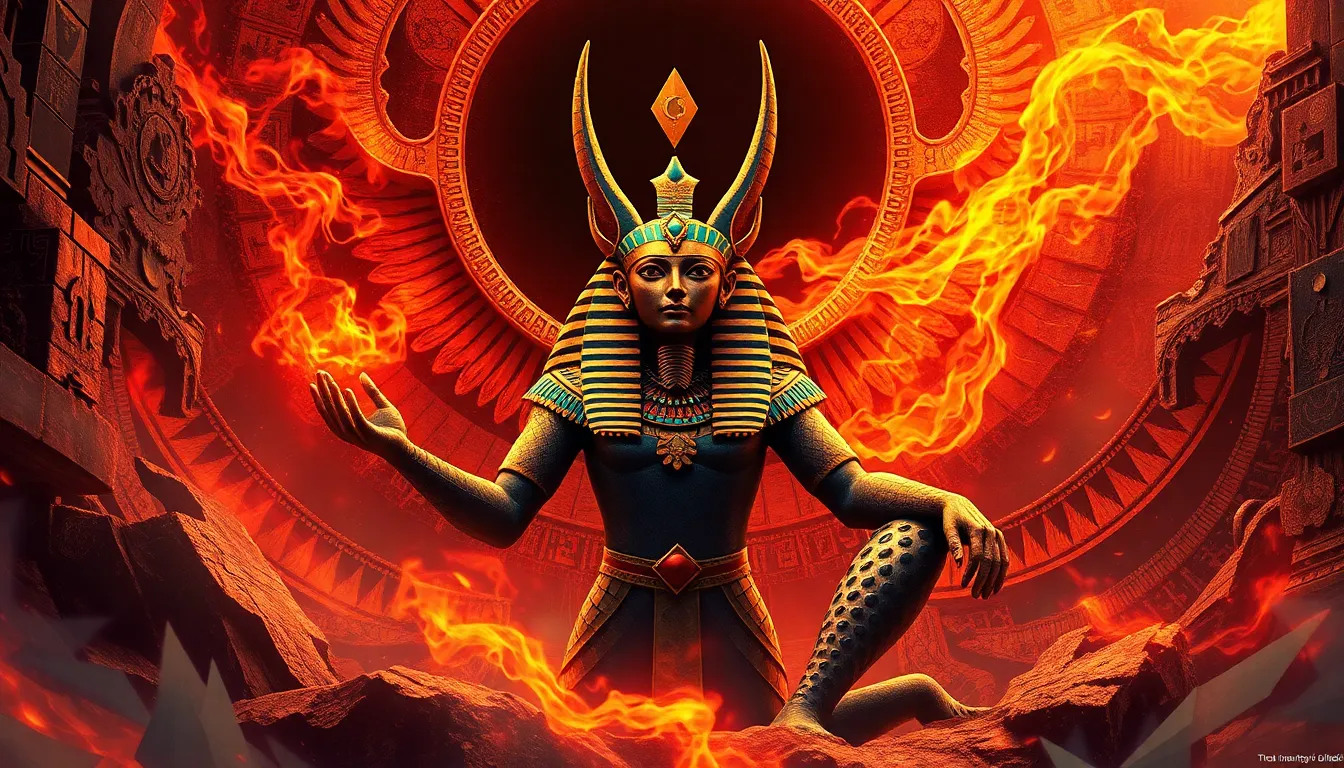The Spiritual Teachings of the Goddess Sekhmet
I. Introduction to Sekhmet
In ancient Egyptian mythology, Sekhmet is one of the most powerful and complex deities. She is often depicted as a lioness, embodying both the ferocity of a warrior and the nurturing qualities of a healer. As a goddess of war and healing, Sekhmet exemplifies the duality of strength and compassion, making her a significant figure in Egyptian spirituality. This article aims to delve into her spiritual teachings, exploring how her dual nature can offer profound insights for personal growth and healing.
II. Historical Context of Sekhmet
Sekhmet’s origins date back to the early dynastic period of Ancient Egypt, where she was worshipped as a fierce protector of the pharaohs and the land. Her name translates to “the powerful one,” indicating her role as a goddess of war. Over time, she became associated with healing, highlighting her multifaceted nature.
The iconography of Sekhmet is rich and varied, often depicting her with a lioness head and a woman’s body, adorned with a solar disk and an ankh. These symbols represent her power as a goddess of the sun and her ability to give life. In Egyptian society, Sekhmet held a vital role in religious practices, serving as a protector against diseases and enemies alike.
III. The Dual Nature of Sekhmet
Understanding Sekhmet requires an appreciation for her dual nature:
- Goddess of War: Sekhmet is revered as a protector and avenger, leading the charge in battles and safeguarding the pharaohs. Her fierce nature is essential for maintaining order and justice.
- Goddess of Healing: Paradoxically, Sekhmet is also the goddess of healing and fertility. She is believed to have the power to cure diseases and bring forth life, offering solace and compassion to her followers.
These contrasting aspects of Sekhmet show the importance of balance in life, demonstrating that strength and compassion can coexist and complement each other.
IV. Key Spiritual Teachings of Sekhmet
Through her dual nature, Sekhmet imparts several spiritual teachings that can guide individuals on their paths:
- Embracing Inner Strength and Empowerment: Sekhmet encourages individuals to recognize their inner strength. Embracing one’s power can lead to greater self-confidence and assertiveness.
- The Importance of Healing and Self-Care: As a healer, Sekhmet emphasizes the necessity of self-care. Nurturing oneself physically, emotionally, and spiritually is crucial for overall well-being.
- The Role of Anger and Transformation in Spiritual Growth: Sekhmet teaches that anger, when acknowledged and transformed, can be a catalyst for change. Understanding and channeling anger can lead to personal transformation and growth.
V. Rituals and Practices Associated with Sekhmet
Various rituals and practices have been dedicated to Sekhmet throughout history:
- Ancient Rituals: In ancient times, priests would perform rituals to invoke Sekhmet’s protection and healing powers. These often involved offerings, prayers, and ceremonies during her festival, known as the Feast of the Great Lady.
- Modern Interpretations: Today, many modern spiritual practitioners have adopted Sekhmet’s teachings in their rituals, focusing on empowerment and healing.
- Meditation and Visualization: Techniques inspired by Sekhmet include meditative practices that focus on embodying her strength and compassion, visualizing oneself surrounded by her protective energy.
VI. Sekhmet’s Influence on Contemporary Spirituality
In recent years, there has been a resurgence of interest in Sekhmet within various spiritual movements:
- Feminine Power and Empowerment: Sekhmet has become a symbol of feminine power, inspiring women to embrace their strength and assertiveness in a world that often marginalizes them.
- Integration of Teachings: Many contemporary spiritual practices incorporate Sekhmet’s teachings of balance, healing, and empowerment, encouraging individuals to connect with their inner warrior and healer.
VII. Case Studies: Personal Transformations through Sekhmet
Personal stories of individuals connecting with Sekhmet highlight her profound impact:
- Transformational Journeys: Many have reported significant transformations in their lives after engaging with Sekhmet’s teachings. These transformations often include overcoming personal struggles, healing from trauma, and reclaiming personal power.
- Impact on Healing: Individuals have shared how invoking Sekhmet during their healing journeys has provided them with strength and guidance, helping them navigate through difficult times.
- Lessons Learned: Common lessons from these experiences include the importance of acknowledging one’s anger, seeking healing, and the value of inner strength.
VIII. Conclusion
In summary, Sekhmet embodies powerful spiritual teachings that resonate deeply in today’s world. Her dual nature as both a warrior and a healer offers profound insights into the balance of strength and compassion. By exploring Sekhmet’s wisdom, individuals can find inspiration to embrace their inner power, prioritize healing, and transform challenges into opportunities for growth.
As you navigate your spiritual journey, consider integrating Sekhmet’s teachings into your daily life. Embrace her strength, honor your healing process, and allow her wisdom to guide you toward transformation and empowerment.
Ultimately, Sekhmet remains a relevant and inspiring figure, reminding us of the importance of balance and the power within each of us to create change.




